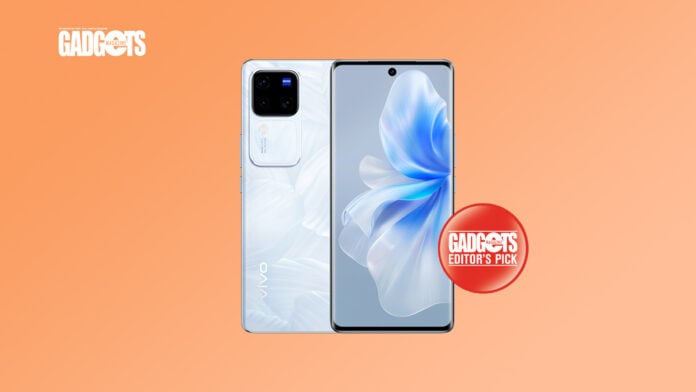Launched alongside the vivo V30 5G last 20 March 2024, the vivo V30 Pro 5G may look like the same device, but it has a couple of key visible changes on its body and invisible changes under the hood which makes it the new top dog of vivo’s local lineup. However, do these upgrades justify the PHP7,000 price difference between the V30 Pro 5G and its non-Pro sibling? How can it possibly improve upon the V30 5G’s already stellar review?
Design: 5/5
Externally, the vivo V30 Pro and its non-Pro sibling are almost completely the same. Like the V30 5G we reviewed a few weeks back, the V30 Pro unit we checked out also came in the clean-looking Petals White palette. Tilting it around reveals the visually-interesting faux-textured bluish white petals, with a matte finish to ensure it remains oil- and smudge-free. However, as of writing, the Pro only comes in this lone colorway.
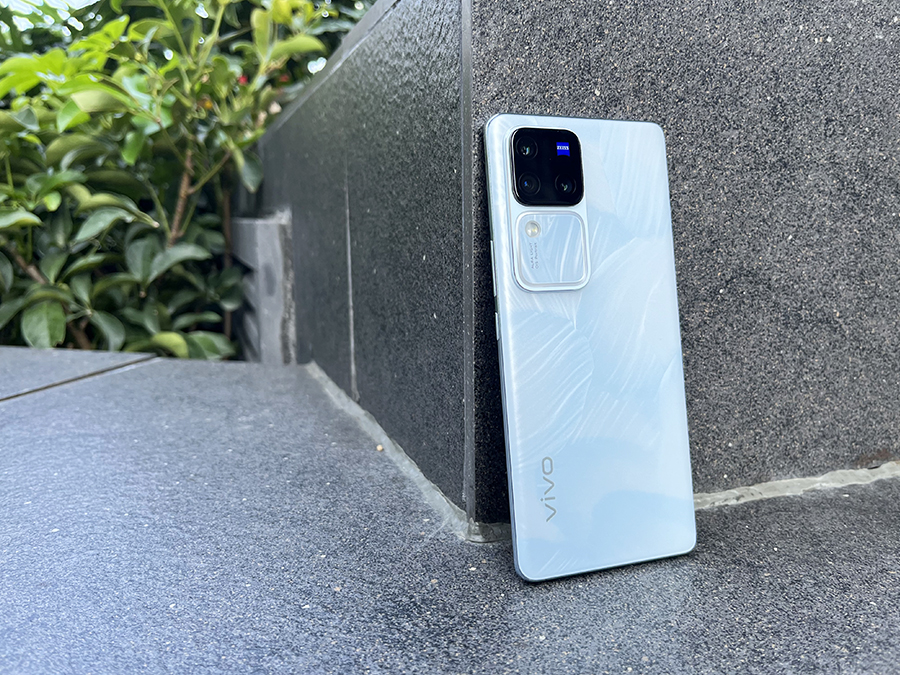
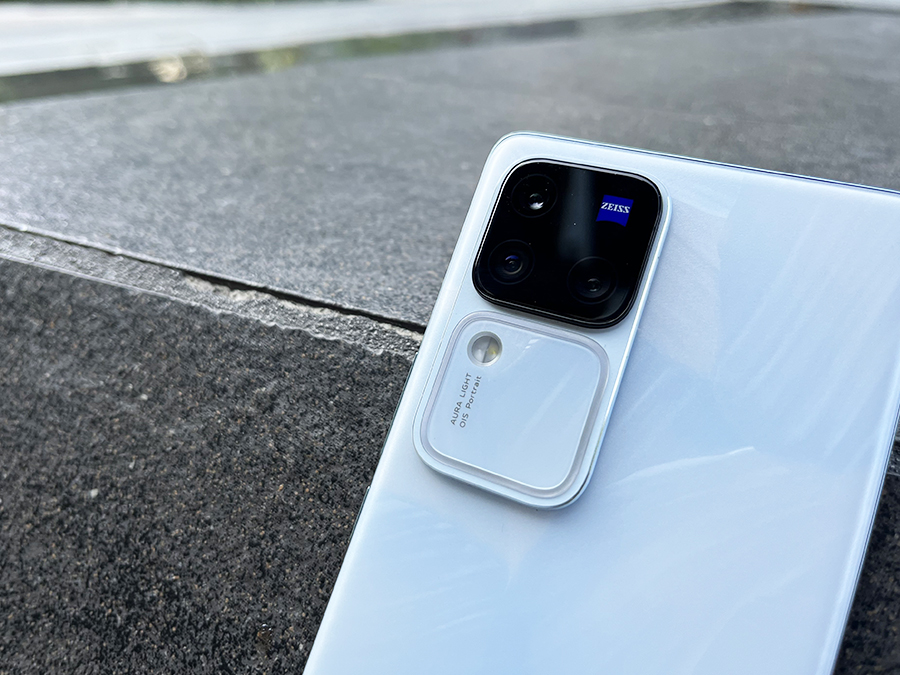
One of the visible upgrades of the V30 Pro is the triple rear camera system. Sitting in the same aesthetically premium square camera hump that we loved from the V30, the V30 Pro features three ZEISS-engineered cameras to cover a wide gamut of use cases. On the upper right of the camera island is the ZEISS logo, on the bottom right is the main shooter, on the bottom left is the ultrawide camera, and on the upper left is the telephoto lens. This black camera island sits atop the lighting island, which is also colored in Petals White and contains the standard flash bead and Vivo’s Aura Light 3.0 system.
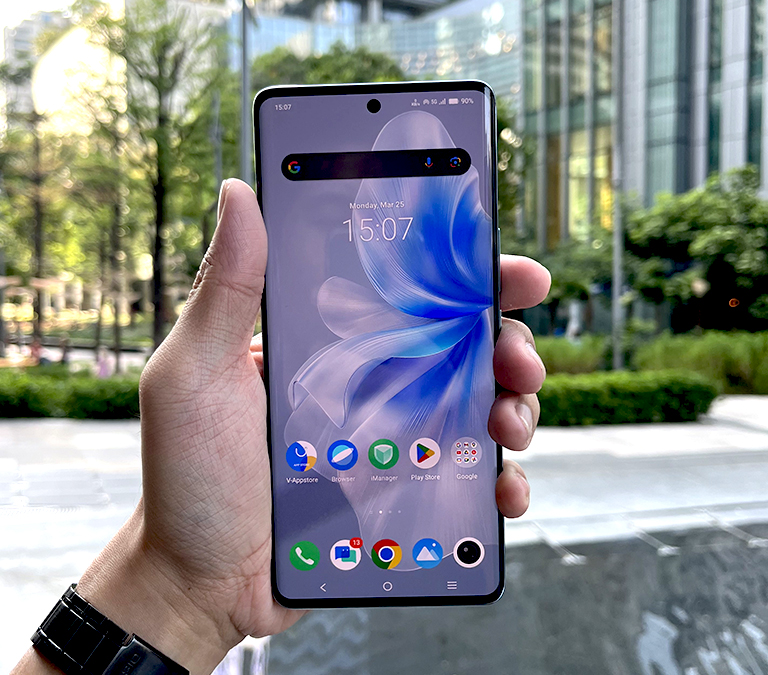
Flip the V30 Pro around, and you’d be hard-pressed to distinguish it from the V30, which isn’t a bad thing. You still have the same sizable 6.78-inch AMOLED curved glass screen with slim bezels. The invisible call earpiece and punchhole front-facing camera are both at the top, while the optical in-screen fingerprint reader is near the bottom. A tour of the edges is also familiar territory. The top edge has the microphone pinhole; the left edge is blank; the bottom edge features the dual nano-SIM tray, a second microphone pinhole, a USB Type-C port, and a lone speaker grille; and the right edge has the power button and volume rockers.
In terms of physical durability, we have the same durable Schott Alpha glass, plastic frame with reinforced sides and aluminum alloy corners, and IP54 rating for dust and water resistance.
Physically, the V30 Pro also comes in the exact same slim form factor measuring 164.36 × 75.1 × 7.45mm. In fact, despite the triple rear camera upgrade and the change in the processor (more on that later), the V30 Pro only weighs a negligible two grams more than the V30 at 188g versus the latter’s 186g. I surmise that the difference is due to the extra camera glass.
Hardware: 5/5
As we mentioned earlier, the vivo V30 Pro has some non-visible changes under the hood to further distinguish it from the V30. Whereas the V30 runs on the 4-nanometer octa-core Qualcomm Snapdragon 7 Gen 3 platform clocked at a maximum of 2.63GHz, the V30 Pro sports a 4-nanometer octa-core MediaTek Dimensity 8200 chipset. This upper-midrange processor ticks as high as 3.1GHz in the lone fastest A78 core; 3.0GHz in three other A78 cores; and 2.0GHz across four A55 cores. It is paired with a Mali G610 GPU, 12GB of RAM, and 512GB of non-expandable storage.
As mentioned, the V30 Pro has a similar display offering as the V30. It is also equipped with a 6.78-inch AMOLED screen with a 2800 × 1260px Full HD+ resolution and a pixel density of 453ppi. This display maxes out at a brightness of 1200 and a refresh rate of 120Hz.
In addition to the processor, the vivo V30 Pro’s other major upgrade is the aforementioned ZEISS Triple Main Camera system. The main shooter has a 50MP Sony IMX920 sensor sized at 1/1.49-inches and with a wide aperture of f/1.88. It comes with phase detection autofocus (PDAF) and optical image stabilization (OIS) for steady in-motion videos. The second shooter is another 50MP one, this time a Sony IMX816 with a size of 1/2.51-inches, f/2.0 aperture, and 50mm equivalent focal length for portraits and clearer zoom-in capabilities. The third is likewise 50MP, with a JN1 sensor sized at 1/2.76-inches, aperture of f/2.0, and 15mm equivalent focal length for ultra-wide shots. These three have been co-engineered with ZEISS, most notably giving the vivo V30 Pro stellar subject-background separation in portraits, as well as providing the signature ZEISS color profile. Up front is a 50MP f/2.0 with a 1/2.76-inch sensor and 92° field of view for wide-angle group selfies. Both front and rear shooters max out at a video resolution of 4K at 60fps without stabilization. Ultra stabilization mode is only available until 1080p at 60fps, while Standard stabilization is only until 4K at 30fps.
While the ZEISS-branded cameras are already capable of capturing great low-light photos on their own, the V30 Pro Aura Light Portrait 3.0 lighting module is available to give your portrait and macro shots a boost during near-lightless situations.
Finally, the vivo V30 Pro manages to pack a 5000mAh power source in its svelte 7.45-mm body. It ships with an 80W vivo FlashCharge power brick and Type-C cable for an advertised 0-to-100% charging time of just 48 minutes.
User Experience: 5/5
Spending a week with the vivo V30 Pro as my main device, I can say that it manages to unsurprisingly shine in the same areas that made me love the V30. Better yet, the vivo V30 Pro manages to surpass the base V30 in terms of sheer processing power and even photography, which were already impressive to begin with.
For the benchmarks, the vivo V30 Pro managed the following ratings: 6,789 on the 3D Mark Wild Life test; 10,316 on the PCMark Work 3.0 Benchmark; 1,047 on the Geekbench 6 CPU single-core test; 3,278 on the Geekbench 6 CPU Multi-core test; and 4,356 on the Geekbench 6 GPU OpenCL test. For storage, it notched 650.43 MB/s on sequential writes and 904.75 MB/s on sequential reads using the Cross Platform Disk Test. Compared to the non-Pro version, the V30 Pro performed much better across almost all the synthetic processing benchmarks by as small as 7.51% and as high as 29.87%. For storage speeds, it is 15.64% faster at writes and 60.86% faster at reads. In fact, the only exception was single-core performance where it fared 8.72% worse than the non-Pro unit. Check out the numbers for the V30 here and see for yourself.
Overall, it’s clear that the vivo V30 Pro, with its Mediatek Dimensity 8200 processor, has one leg up on its sibling power-wise. For real-world scenarios, the vivo V30 Pro expectedly crushes anything thrown at it. With everything turned up to the highest available settings and even with 120Hz refresh rate turned on, Pokemon Unite, Mobile Legends: Bang Bang, Asphalt 9: Legends, Call of Duty Mobile, Diablo Immortal, and Genshin Impact played buttery smooth. While the phone heated up somewhat, the Ultra Large Smart Cooling System managed to still make handling the V30 Pro bearable.


The ZEISS portrait mode is able to bring a natural-looking background blur.
For the cameras, the vivo V30 Pro’s ZEISS branding is well-placed, as the phone is able to deliver beautiful shots across many lighting scenarios and many use cases. Comparing shots between the V30 Pro and the base V30, I found that the Pro lets in more light and has better dynamic range. The V30 Pro is also able to capture images with clearer edges and more detail—something more obvious when pixel peeping. Color post-processing is tamer and is arguably closer to what the eyes see, especially when using the ZEISS natural color mode. In addition to the ZEISS co-engineered optics, I reckon the slightly larger sensor size of the V30 Pro’s main shooter can be thanked for these subtle but present differences.
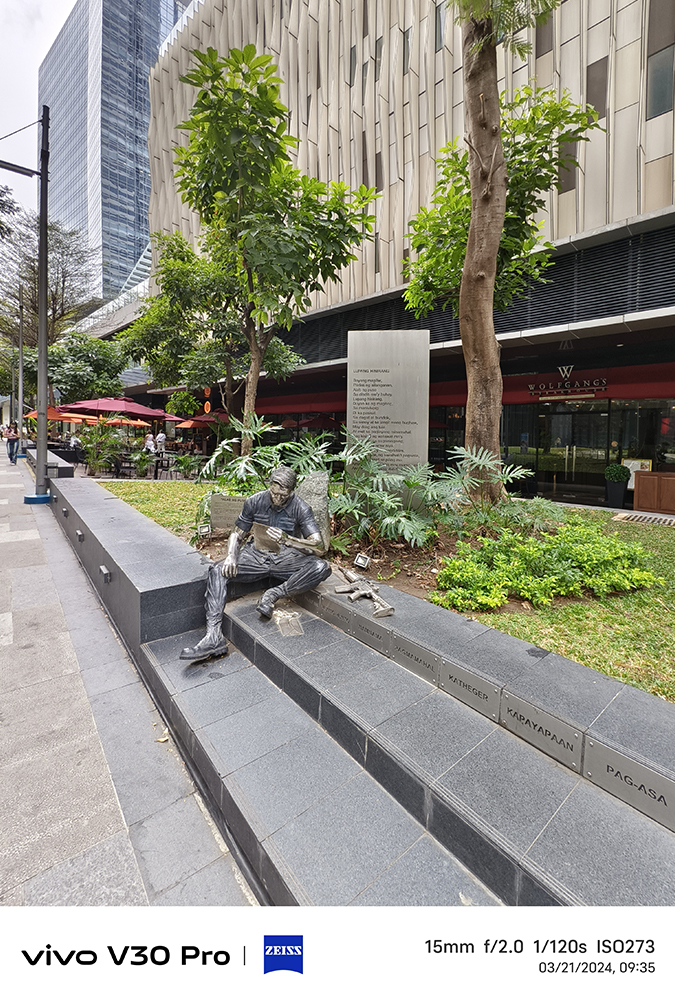

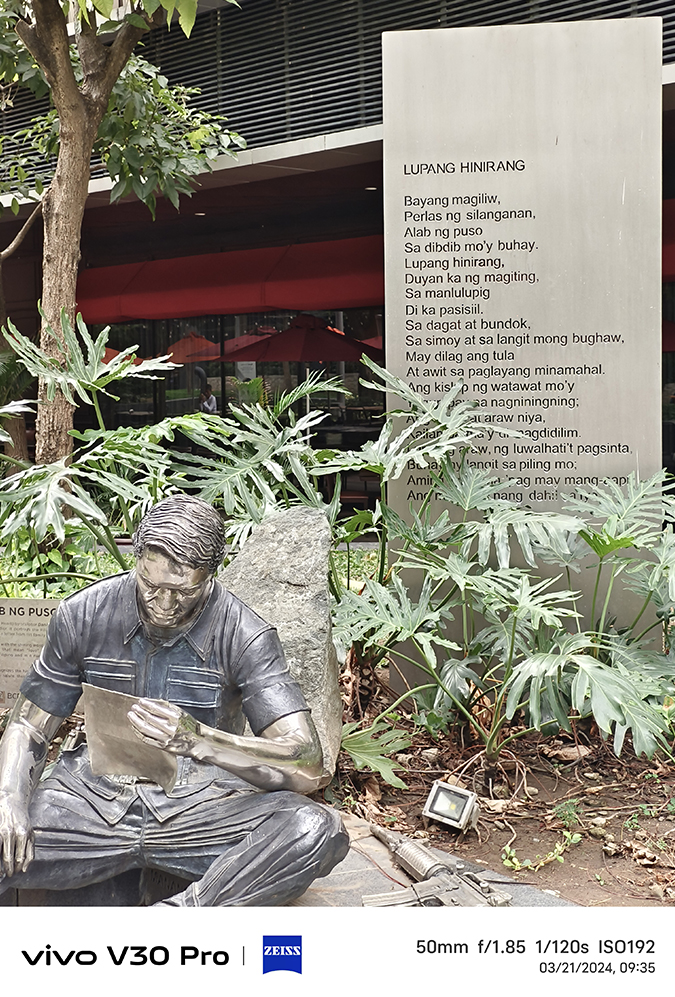

In addition to the fantastic main shooter, the vivo V30 Pro’s 50mm-equivalent telephoto lens also yields nice portraits. As this is a physical 2x zoom lens as opposed to being a digital crop, shots came out looking as clean, as naturally-colored, and as detailed as the main shooter. There’s also a 4x zoom option, though sharpness expectedly drops off. For the ultra-wide camera, details are also expectedly soft off-center, but shots still look great and are plenty useable. Selfies also look nice and bright even in low light. Meanwhile, you’re getting an upgraded video capture resolution which maxes out at 4K at 60fps.
Another photography boon for the vivo V30 Pro is the Aura Light 3.0 system which is available for both photos and videos using the rear cameras. While the V30 Pro is already able to let in plenty of light, the Aura Light 3.0 module at the back makes shooting dark and high-contrast lighting situations easier. It is able to provide convenient and soft fill-lighting for more flattering-looking and brighter shots.
To wrap up some other points regarding the vivo V30 Pro: (1) the display is as great as the base V30; (2) the speaker setup sounds the same; (3) battery life I felt was able to last for a full day even with data and hotspot on; and (4) charging times are as fast as advertised, taking around 50 minutes from dead to full.
My only gripe with the base vivo V30 also applies to the V30 Pro: the slippery body, which necessitates the use of a case — whether the included one in the box or a third-party one. Other than that, it was a sweet time all around with the V30 Pro.
Value: 5/5
Going back to the question posed at the beginning of this review, do these upgrades justify the PHP7,000 price difference between the V30 Pro 5G and its top-spec’ed non-Pro sibling, and how can it possibly improve upon the base V30’s already stellar review? Retailing at PHP34,999 for the lone 12GB RAM + 512GB ROM variant, I can say that the V30 Pro is able to make a case for itself, particularly thanks to its stronger processor and awesome ZEISS Triple Main camera setup. These two alone should make the V30 Pro a reliable driver for a few years down the line, meaning you’re getting more bang for your buck.
Interested? Test out the vivo V30 Pro by visiting your nearest vivo concept store or kiosk, and order it on the official vivo website or the official vivo Shopee and Lazada pages. Watch out for upcoming sales, and the marked-down price makes the vivo V30 Pro a can’t-miss device for those looking to upgrade.
Specifications:
- Display: 6.78-inch, 2800 × 1260px FHD+ AMOLED 3D Curved Screen with 120Hz refresh rate
- Processor: MediaTek Dimensity 8200
- OS: Funtouch OS 14 (Android 14)
- RAM: 12GB + 12GB Extended RAM 4.0
- Storage: 512GB
- Camera: 50MP f/1.88 with a 1/1.49-inch sensor, PDAF, and OIS (main rear); 50MP f/1.85 with a 1/2.51-inch sensor, PDAF, and 2x optical zoom (telephoto rear); 50MP f/2.0 with a 1/2.76-inch sensor ultra-wide (ultra-wide rear); 50MP f/2.0 with a 1/2.76-inch sensor (front)
- Connectivity: 5G, 4G LTE, Wi-Fi 6, Bluetooth 5.3, GPS, NFC, OTG, USB 2.0 Type-C, dual nano-SIM
- Battery: 5000mAh, 80W vivo FlashCharge
- Others: Aura Light Portrait 3.0, In-display Fingerprint Scanner, IP54 dust and water resistance
- Dimensions: 164.36 × 75.1 × 7.45mm
- Weight: 188g
- Colors: Petals White
What’s Hot:
- It’s the great vivo V30 made even better
- ZEISS-branded triple cameras
- More powerful innards based on benchmarks
What’s Not:
- Slippery build necessitates a case
- Still just one speaker
Bottomline:
The Pro moniker is well-deserved.
Reviewed and Photos by Chris Noel Hidalgo
Also published in GADGETS MAGAZINE April 2024 Issue
